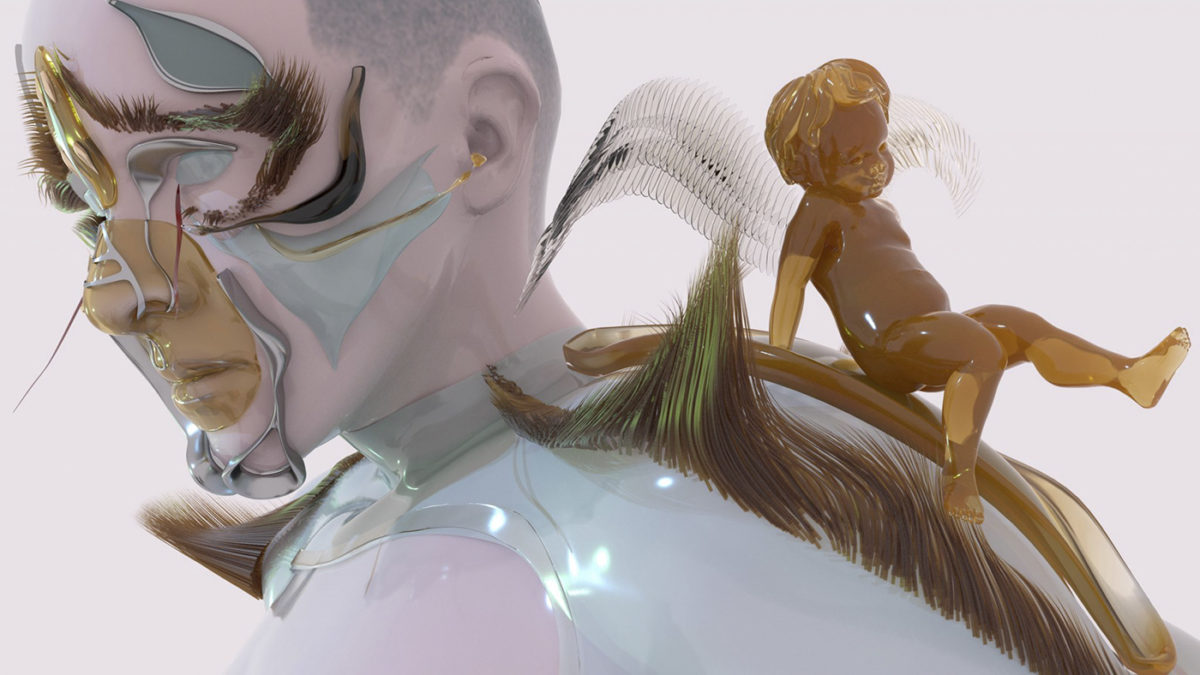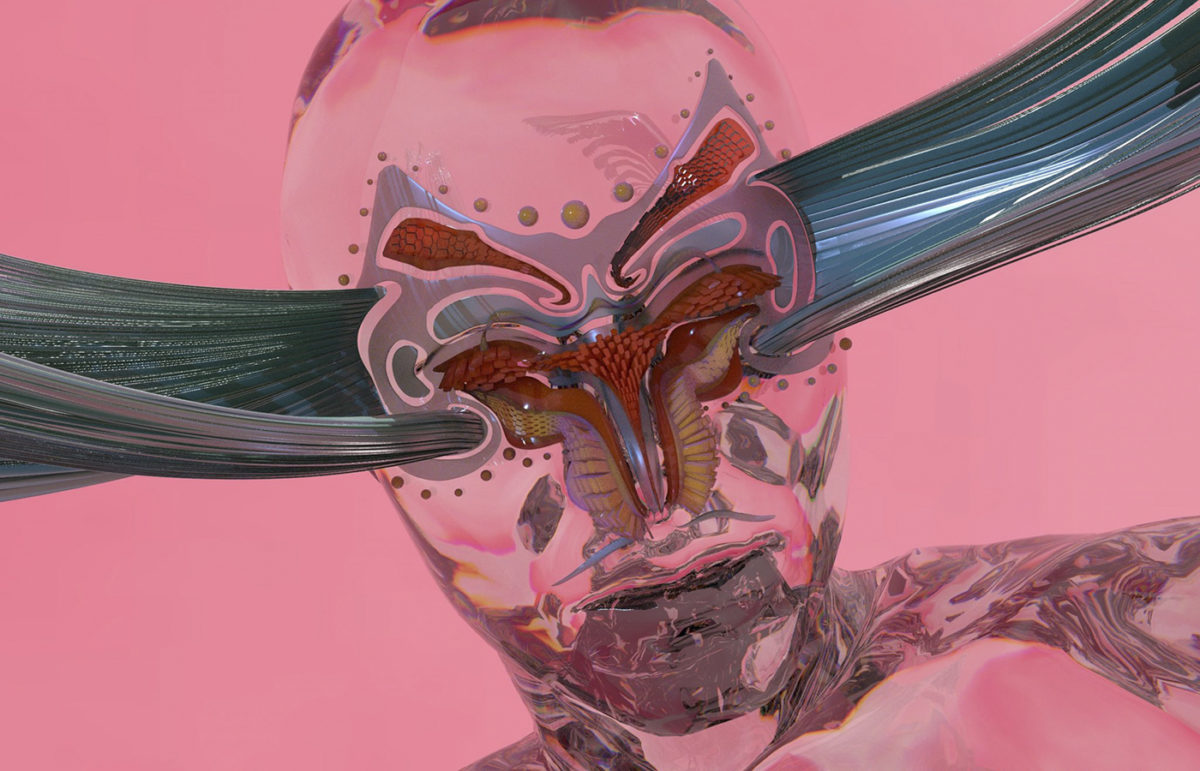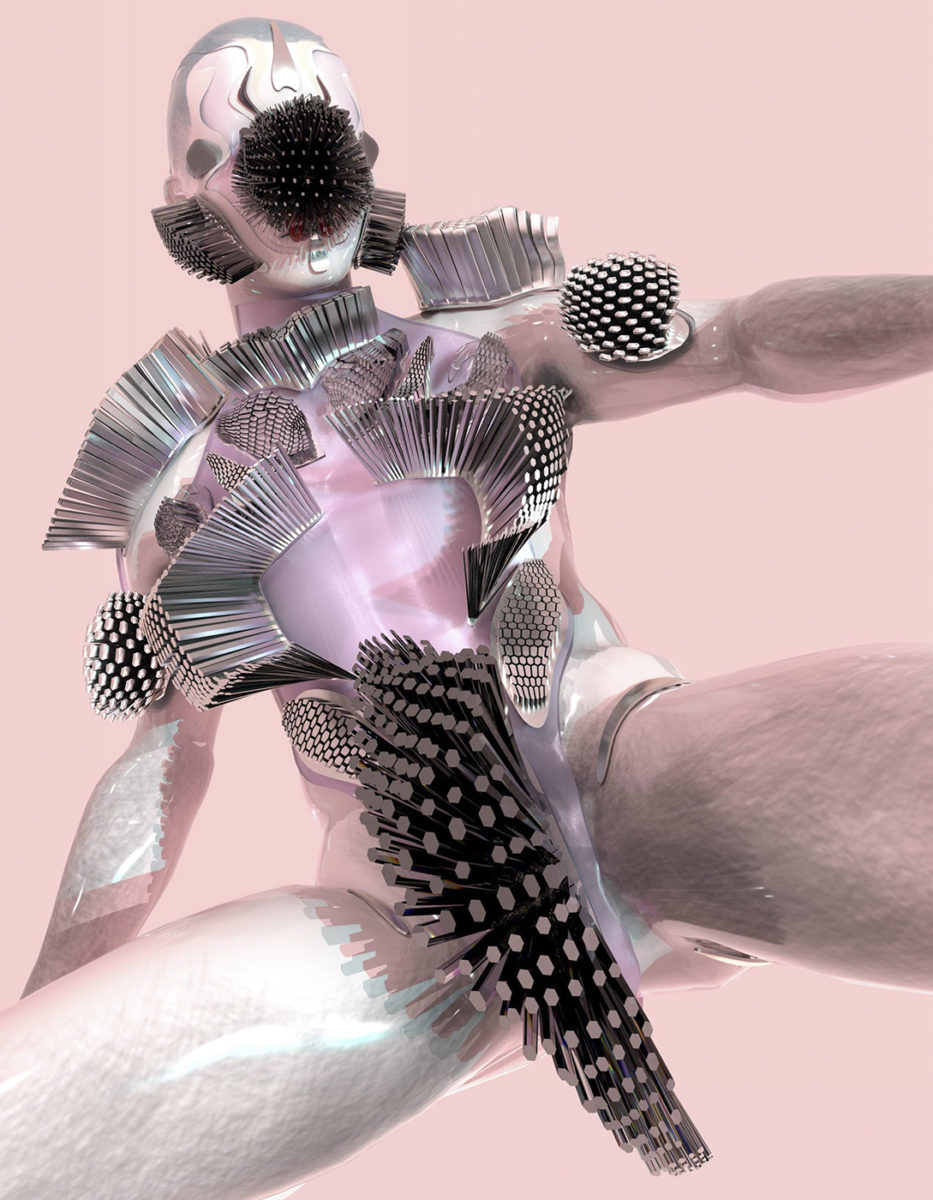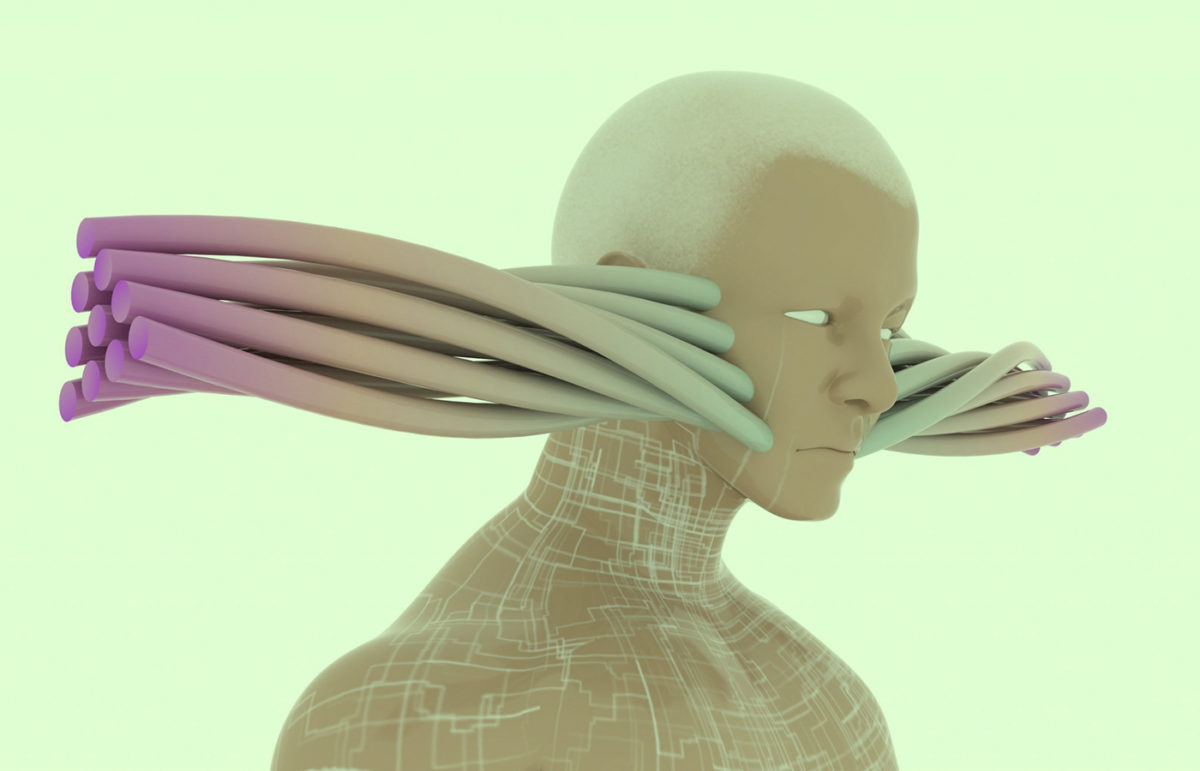
MARCEL/A BALTARETE
Gender dysphoria describes the distress that can be experienced by people whose biological sex and gender identity do not match – a feeling often described as grief, discomfort, inadequacy… Royal College of Art graduate Marcel/a Baltarete has created a series of short animations depicting themselves as otherworldly beings to alleviate and interrogate their feelings of gender dysphoria.
Marcel/a is non-binary and uses they/their pronouns. They studied fashion at the RCA but changed mediums partway through their graduate degree. Marcel/a told Dezeen that they were started feeling uncomfortable and dishonest with fitting garments on other people’s bodies when they realized they didn’t have a good understanding of their own body, as the questions around his/her/their own gender identity started to surface. In order to explore these questions on their own body, Marcel/a taught themselves how to work with 3D modelling, augmented and virtual reality. Explore those questions in real life would have felt too exposing, therefore Marcel/a preferred the digital world to maintain a safe distance.
They 3D scanned their head to create a virtual avatar of themselves, which was digitally enhanced and animated to transform into virtual beings with fur, translucent horns or impossibly glossy skin. In two short films, titled A Journey of Digital Introspection and Relief part one and two, the designer plays with abstracted body parts that suggest different sexual organs, as a way of exploring their feelings about different gender expressions without having to engage with the realities of their own body.
c
c
Marcel/a described the process as therapeutic, saying that it was able to relieve their feelings of gender dysphoria in favor of an unprecedented “gender euphoria”. “Digital re-embodiment allowed me to reimagine an alternative way of living, a post-human, trans-human future where I wouldn’t be limited by any physical or mental constraints,” they said Dezeen “It also allowed me to question my desire for a fit, masculine-appearing body and if this is something I genuinely identify with or a product of my internalized misogyny.”
Marcel/a is currently an artist in residence at The Immersive Kind (have a look!), an interdisciplinary collective working to ensure that digital technologies contribute to an accessible, inclusive and sustainable future rather than simply being used as a means of surveillance and subjugation. A crucial step in this, according to the initiative’s CEO and co-founder Kadine James, is broadening access to new technologies among people of colour and the LGBT+ community, which is underrepresented in the tech world. Kadine added that virtual and augmented reality are already being used as forms of therapy, with companies including Oxford VR and Stanford University’s VR-IT clinic using it to treat phobias, social anxiety and PTSD.
Marcel/a Baltarete’s project and The Immersive Kind show us a reality that cannot be ignored. Computer science technologies such as virtual reality (VR) and augmented reality (AR) provide new avenues to alleviate depression and anxiety that can be associated with gender dysphoria, phobias, PTSD… Moreover, since 2017 VR and AR are also used to treat neuropsychiatric disease.
Mostly known for video games and customer services (such as real-time renderings), these technologies can be a real solution to help our future well-being.
c
via dezeen



